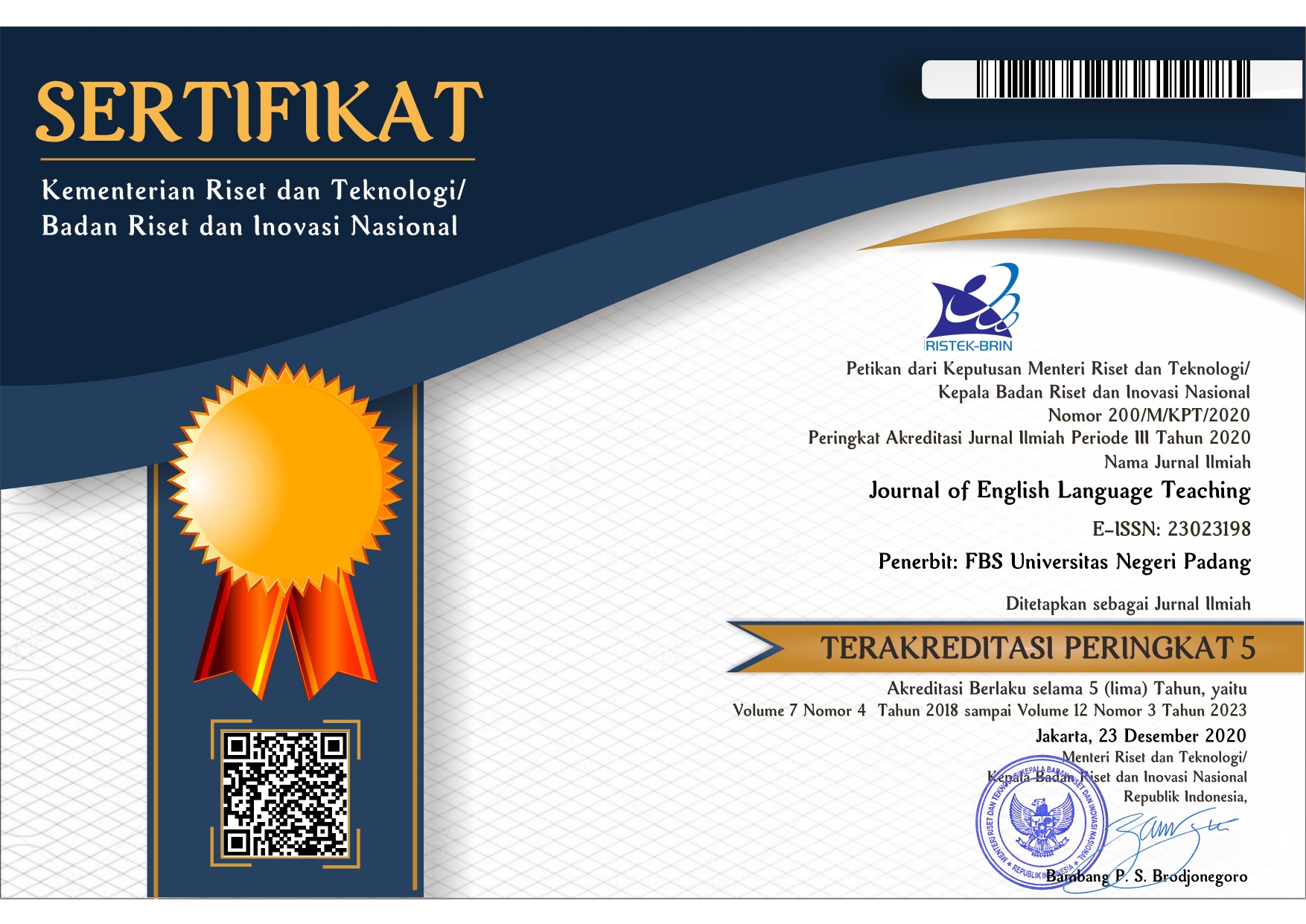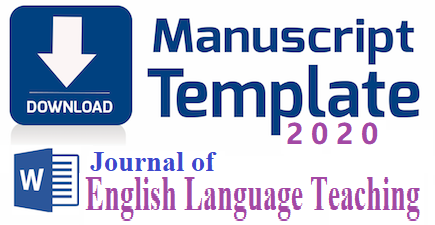Teaching Spoken Narrative Text by Using Animation Film to Junior High School Students
 ), Aryuliva Adnan(2),
), Aryuliva Adnan(2), (1) Universitas Negeri Padang
(2) Universitas Negeri Padang
 Corresponding Author
Corresponding Author
Copyright (c) 2019 Journal of English Language Teaching
DOI : https://doi.org/10.24036/jelt.v8i1.103289
Full Text:
 Language : en
Language : en
Abstract
This article aims to explain how animation film can increase students’ motivation in learning spoken narrative text. Animation film is used as a media in teaching spoken narrative text to increase students’ motivation in learning spoken narrative. Animation film is chosen as a media in teaching spoken narrative text because it is familiar to Junior High School students. Students will be more interested and motivated to study if learning process is done by doing fun activities. In addition, animation film gives them a guidelines about what they want to tell. As an audio visual media, it enable students to understand the story through sight and sounds. Then, animation film also facilitates students to memorize the events in sequence. By using animation film to teach spoken narrative text, students will be easier to understand the story and can tell the story well.
Keywords
References
Arsyad, Azhar. 2003. Media Pembelajaran. Jakarta: PT. Raja Grafindo Persada.
Baldwin, Jackie and Kate Dudding. 2007. Storytelling in School. p.40.
Brown, H.Douglas. 1994. Teaching by Principles: an Interactive Approach to Language Pedagogy.
Englewood Cliffs, NJ: Prentice Hall Regents.
Brown, H. Douglas. 2001. Teaching By Priciples: an Interactive Approach to Language Pedagogy. San Fransisco: Longman.
Brown, H. Douglas. 2003. Language Assessment: Pinciples and Classroom Practices.London : Longman.com
Burns, A & Joyce, H. 1997. Focus on Speaking. Sydney: National Center for English Language Teaching and Research.
Candra, Rizki. 2011. The Effectiveness of Using Animation Movies as A Medium to Improve The Students’s Writing Skill of Narrative Text. Semarang: UNNES
Clark, C. (2000). Innovative strategy: Concept Cartoons. Instructional and learning
strategies.
Doring, A. (2002). The Use of Cartoons As A Teaching And Learning Strategy With Adult Learners. New Zealand Journal of Adult Learning, 30, 56-62.
Eades, Jennifer M. Fox. 2006. Classroom Tales: Using Storytelling to Build Emotional, Social and Academic Skills Across the Primary Curriculum. London: Jessica Kingsley Publishers.
Gere, J., B.Kozolvich and Kelin D. 2002. By Word of Mouth: A Storytelling Guide For The Clssroom. Honolulu: HI, Pacific.
Harmer, Jeremy. 2001. The Practice of English language Teaching. Longman: Pearson Education.
Harmer, Jeremy. 2007. How to Teach English. England: Pearson Education Limited.
Klein, Kerstin. 2005. Teaching Young Learners. English teaching forum. 'Forum' Vol. 36 No 1, January - March 1998 Page 20. www.teflgames.com. Retrieved on Maret, 16 2017
Maduri, J, N. (2013) Use of Audio Visual Aids in Teaching and Speaking. Research Journal of English Language and Literature, I (3), 108-122.
Mark Anderson, and Kathy Anderson. 1998. Text Type in English 3. Melbourne: Maxmillan.
Mayer, R. E. & Moreno, R. (2002). Animation as an Aid to Multimedia Learning, Educational Psychology Review 14(1): 87-99.
Miller, Eric. 2015. Ways Storytelling Can Be Used for Teaching-And-Learning. p.4.
Munir. 2012. Multimedia Konsep & Aplikasi dalam Pendidikan. Bandung: Alfabeta
Pawlak, Miroslaw. 2015. Issue in Teaching, Learning and Teasting Speaking in a Second Language. New York : Springer.
Stanley, N & Dillingham, B. (2009). Performance Literacy Through Storytelling. Gainesville, FL: Maupin House Publishing
Wilkin, Binnie Tate. 2014. A Life in Storytelling. United Kingdom: ROWMAN & LITTLEFIEL
 Article Metrics
Article Metrics
 Abstract Views : 549 times
Abstract Views : 549 times
 PDF Downloaded : 372 times
PDF Downloaded : 372 times
Refbacks
- There are currently no refbacks.
Copyright (c) 2019 Journal of English Language Teaching

This work is licensed under a Creative Commons Attribution-NonCommercial 4.0 International License.
















